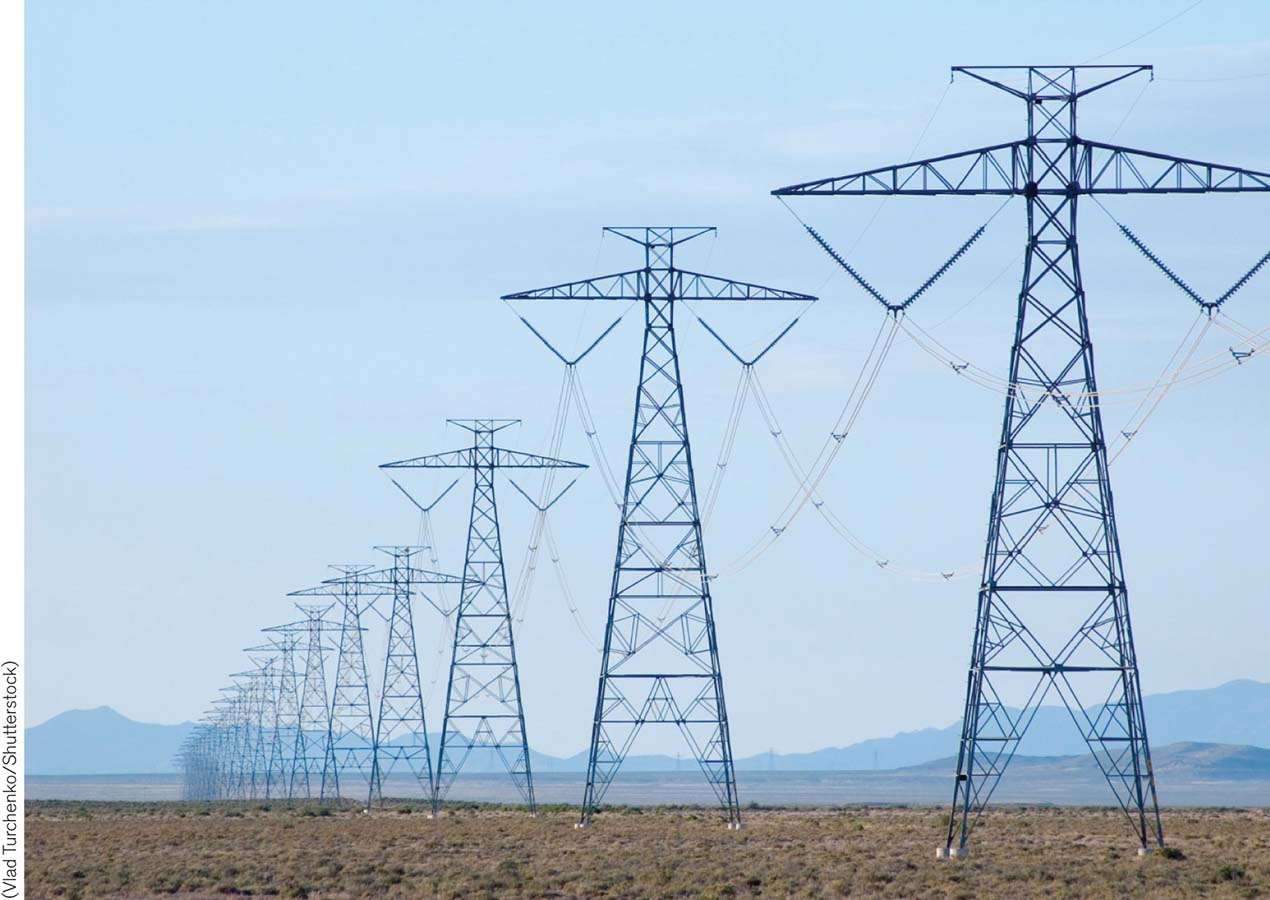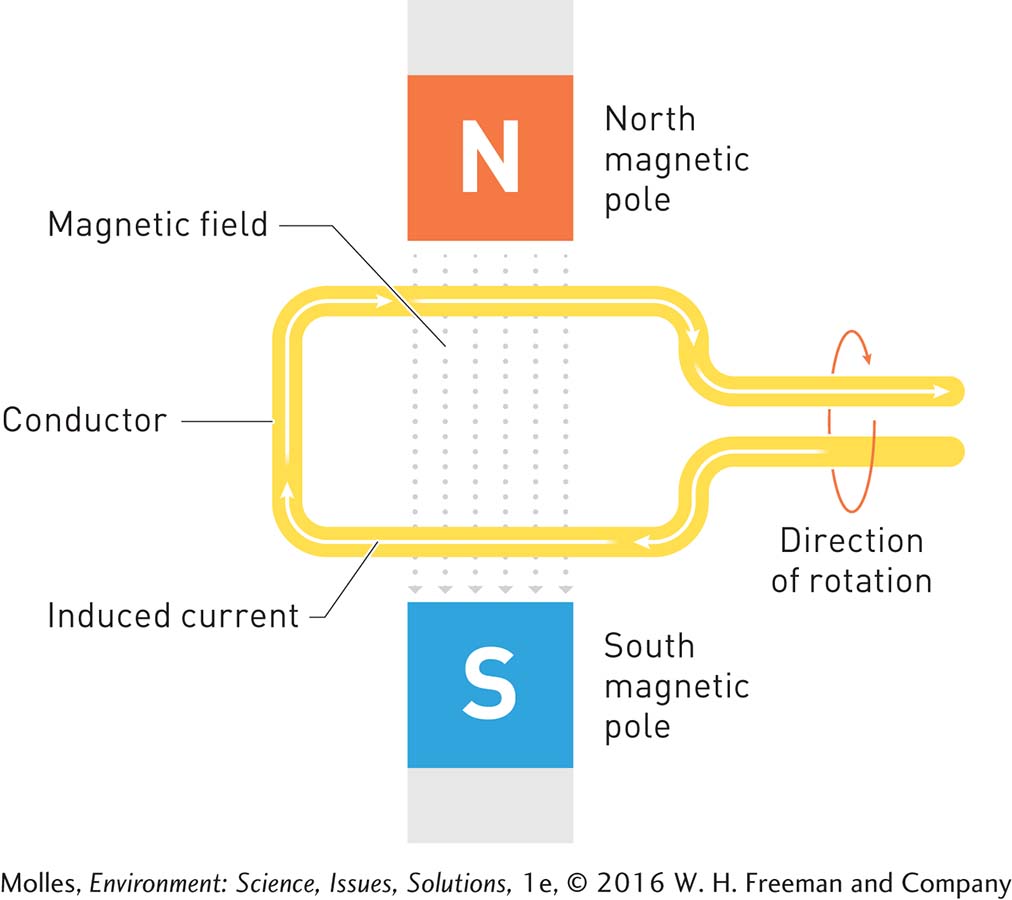9.2 Power plants and vehicles burn fossil fuels to generate electricity and movement
During the early days of the Industrial Revolution, most industries powered their grain mills and other mechanical contraptions directly, using wind mills and water wheels. With the invention of the coal-
Electricity, which is the flow of electrons through materials known as conductors, is one of the most useful forms of energy, in part because it can be transmitted over long distances from a source of production to users (Figure 9.11). Today, when you cook a meal in your microwave or charge your laptop, it’s easy to forget the long path that the electricity may have taken to reach you.

Generating Electrical Power
A device capable of producing electricity, commonly called a generator, includes two basic components: a magnet and a conductor (Figure 9.12). The magnetic component of a generator creates a magnetic field. The movement of a conductor, generally rotating copper wire, through the generator’s magnetic field induces a flow of electrons in the conductor. That flow of electrons can be harnessed to do work ranging from lighting a room to running an electric car. However, we need to remember that it takes energy to move the conductor and generate a flow of electrons. Globally, fossil fuels are the source of approximately two-


Power Plants
Generating electricity is as easy as boiling a pot of water. OK, it’s not that easy—
Let’s take a look at the workings of a typical coal-

271

What costs, beyond the price of fuel, should be taken into account when calculating the cost of delivering electrical power to a home or business?
Each step in the process results in a loss of usable energy. On average, about 35% of the energy content of coal or other combustible fuel is converted into electrical energy. The remainder is lost to the environment as heat (see Figure 2.17, page 47).
Electrical energy can be generated using other combustible fuels, including natural gas, oil, and biomass, in the form of wood or agricultural wastes. Although the physical nature of these materials requires different handling, the principle of their use is the same as in coal-
Trains, Planes, Automobiles, and More
internal combustion engine Engine (most commonly used in cars, boats, and jet airplanes) in which combustion directly drives a set of pistons or turbines hooked up to a crank arm.
With the increased availability of petroleum in the late 1800s, it became possible to develop a more compact engine that didn’t require a separate steam chamber and furnace. In an internal combustion engine, combustion directly drives a set of pistons or turbines hooked up to a crank arm. Most internal combustion engines are used in vehicles, such as automobiles, diesel-
272
combined cycle power plants Power plants that combine a gas turbine engine with a steam power plant.
gas turbine engine Engine that burns natural gas, sending a hot, high-
Combined cycle power plants combine a type of internal combustion engine known as a gas turbine engine with a steam power plant. When operated on its own, a gas turbine engine burns natural gas, sending a hot, high-
Think About It
Why is electricity often referred to as a “secondary” source of energy?
What economic and environmental benefits potentially result from increasing the efficiency of electrical power plants?
Is it possible to create a perfectly efficient power plant? Explain.